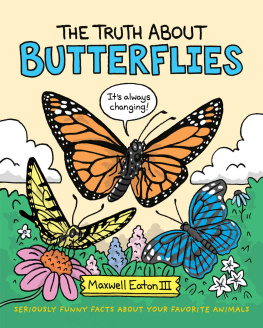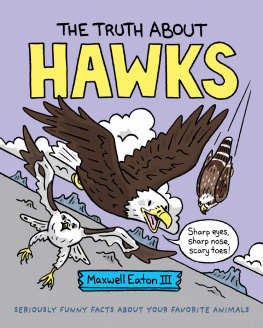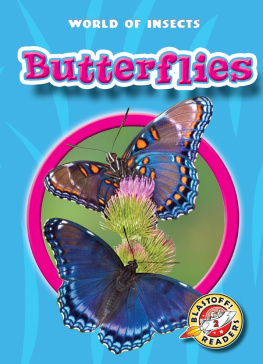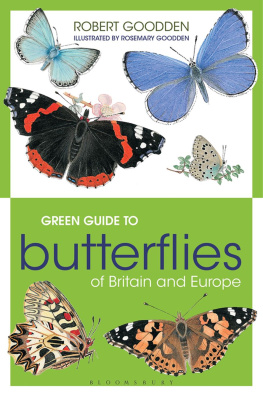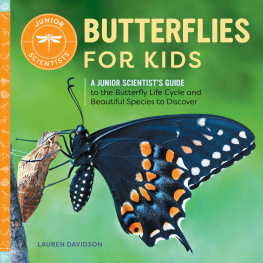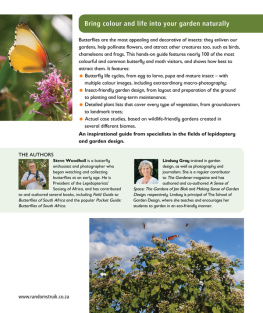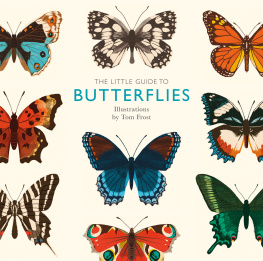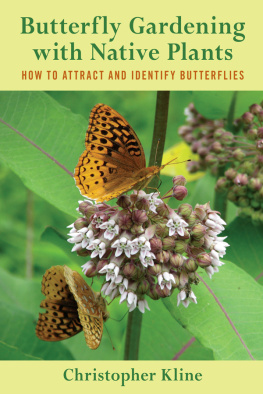|
|
|
|
|
|
|
| |
|
|
|
|
|
|
|
Copyright 2020 by Maxwell Eaton III Published by Roaring Brook Press Roaring Brook Press is a division of Holtzbrinck
Publishing Holdings Limited Partnership 120 Broadway, New York, NY 10271 The art for this book was created using pen and ink with digital coloring. mackids.com All rights reserved Our eBooks may be purchased in bulk for promotional, educational, or business use.
Please contact the Macmillan Corporate and Premium Sales Department at
1-800-221-7945, ext.5442, or by e-mail at MacmillanSpecialMarkets@macmillan.com. Library of Congress Control Number: 2019948798 eISBN: 978-1-250-80063-3 First edition, 2020 Book design by Jennifer Browne Shaoguan, Guangdong Province T hese are butterflies. Butterflies are a type of colorful flying insect. |
|
|
|
|
|
|
|
|
|
|
| |
|
|
|
|
|
|
|
|
|
|
|
| |
|
|
|
|
|
|
|
|
|
|
|
| Copyright 2020 by Maxwell Eaton III Published by Roaring Brook Press Roaring Brook Press is a division of Holtzbrinck
Publishing Holdings Limited Partnership 120 Broadway, New York, NY 10271 The art for this book was created using pen and ink with digital coloring. mackids.com All rights reserved Our eBooks may be purchased in bulk for promotional, educational, or business use.
Please contact the Macmillan Corporate and Premium Sales Department at
1-800-221-7945, ext.5442, or by e-mail at .
Library of Congress Control Number: 2019948798 eISBN: 978-1-250-80063-3 First edition, 2020 Book design by Jennifer Browne Shaoguan, Guangdong Province T hese are butterflies. Butterflies are a type of colorful flying insect.
There are more than 18,000 butterfly species. They live all over the world and come in countless shapes, sizes, and colors. |
|
|
|
|
|
|
|
|
|
|
| |
|
|
|
|
|
|
|
|
|
|
|
|
|
|
| |
|
|
|
|
|
|
|
|
|
|
|
|
|
|
|
|
| |
|
|
|
|
|
|
|
|
|
|
|
|
| |
|
|
|
|
| |
|
|
|
|
|
|
|
|
|
|
|
| |
|
|
|
|
|
|
|
|
|
| |
|
|
|
|
|
|
| There are more than 18,000 butterfly species.
Butterflies are known for their incredible wings.
Butterflies are known for their incredible wings.
Along with
flying and finding mates, each
species uses its wings to avoid
being eaten by larger predators
like birds, snakes, frogs, toads,
and lizards. |
|
|
|
|
|
|
|
|
| |
|
|
|
|
|
|
|
|
|
|
|
|
|
|
|
|
|
|
|
|
|
|
|
| |
|
|
|
|
|
|
|
|
|
|
|
|
|
|
|
|
| |
|
|
|
|
|
|
|
|
| SMALLER PREDATORS LIKE
SPIDERS, ANTS, WASPS, AND
DRAGONFLIES ARENT AS
EASILY FOOLED. |
|
|
|
|
| Butterflies are known for their incredible wings. Along with
flying and finding mates, each
species uses its wings to avoid
being eaten by larger predators
like birds, snakes, frogs, toads,
and lizards. SMALLER PREDATORS LIKE
SPIDERS, ANTS, WASPS, AND
DRAGONFLIES ARENT AS
EASILY FOOLED. |
|
|
|
|
|
|
|
| |
|
|
|
|
|
|
|
|
|
|
|
|
|
|
|
|
|
|
|
|
|
|
|
| THE WINGS OF BOTH BUTTERFLIES AND
MOTHS ARE COVERED WITH MILLIONS OF
TINY SCALES. |
|
|
|
|
|
|
|
| |
|
|
|
|
|
|
|
|
|
|
|
|
|
|
|
|
|
|
|
|
|
|
|
| THE WINGS OF BOTH BUTTERFLIES AND
MOTHS ARE COVERED WITH MILLIONS OF
TINY SCALES.
THERE MAY BE AS MANY AS
125,000 SCALES IN THE SQUARE BELOW. |
|
|
|
|
|
|
|
|
|
|
|
|
|
|
|
|
| |
|
|
|
|
|
|
|
|
| Speaking of look-alikes,
butterflies are closely related
to moths, but there are some
common differences. THE WINGS OF BOTH BUTTERFLIES AND
MOTHS ARE COVERED WITH MILLIONS OF
TINY SCALES. THERE MAY BE AS MANY AS
125,000 SCALES IN THE SQUARE BELOW.
Most adult butterflies feed on nectar,
a sugary liquid made by flowers. |
|
|
|
|
|
|
|
|
|
|
|
|
|
| SOME BUTTERFLIES SIP LIQUIDS FROM
TREE WOUNDS, DECAYING FRUIT, ANIMAL
FECES (POOP), OR ROTTING ANIMALS. |
|
|
|
|
|
|
|
|
| |
|
|
|
|
|
|
|
|
|
|
|
|
|
|
|
|
|
|
|
|
|
|
| BUTTERFLIES ARE AGILE AND DELICATE BUT THEY DONT
START LIFE THAT WAY. |
|
|
|
|
|
|
|
|
| |
|
|
|
|
|
|
|
|
|
|
|
|
|
|
|
|
|
|
|
|
|
|
| BUTTERFLIES ARE AGILE AND DELICATE BUT THEY DONT
START LIFE THAT WAY.
THEY GO THROUGH A PROCESS
CALLED METAMORPHOSIS WHERE THEIR BODIES TRANSFORM
AS THEY GROW. FOR ALL BUTTERFLIES, IT HAPPENS IN FOUR
STAGES. LETS FOLLOW A MONARCH THROUGH THE STAGES! Most adult butterflies feed on nectar,
a sugary liquid made by flowers. The
butterfly uses its proboscis [pro-boss-is]
like a straw to slurp it up. SOME BUTTERFLIES SIP LIQUIDS FROM
TREE WOUNDS, DECAYING FRUIT, ANIMAL
FECES (POOP), OR ROTTING ANIMALS. BUTTERFLIES ARE AGILE AND DELICATE BUT THEY DONT
START LIFE THAT WAY.
THEY GO THROUGH A PROCESS
CALLED METAMORPHOSIS WHERE THEIR BODIES TRANSFORM
AS THEY GROW. FOR ALL BUTTERFLIES, IT HAPPENS IN FOUR
STAGES. LETS FOLLOW A MONARCH THROUGH THE STAGES!
|
|
|
|
|
| An adult female butterfly lays a fertilized
egg on a plant that its young can eat.
This Monarch chooses a milkweed plant. A MONARCH FEMALE LAYS EACH EGG
INDIVIDUALLY BUT WILL DO THIS HUNDREDS OF TIMES. |
|
|
|
|
|
|
|
|
|
|
|
|
|
|
|
| |
|
|
|
|
|
|
|
|
|
|
| |
|
|
|
|
|
|
| |
|
|
|
|
| SOME EGGS ARE LAID ON THEIR OWN, SOME IN GROUPS. |
|
|
|
|
|
|
|
|
|
|
| MOST EGGS HATCH WITHIN FIVE TO TEN
DAYS.
THEN ITS ON TO THE NEXT STAGE. An adult female butterfly lays a fertilized
egg on a plant that its young can eat.
This Monarch chooses a milkweed plant. A MONARCH FEMALE LAYS EACH EGG
INDIVIDUALLY BUT WILL DO THIS HUNDREDS OF TIMES. SOME EGGS ARE LAID ON THEIR OWN, SOME IN GROUPS. MOST EGGS HATCH WITHIN FIVE TO TEN
DAYS.
|
|
|
|
|
| The egg hatches and out crawls a tiny
caterpillar.
|
|
|
|
|
| The egg hatches and out crawls a tiny
caterpillar.
This monarch caterpillar
will spend the next two to three weeks
eating milkweed leaves and growing. |
|
|
|
|
|
|
| A CATERPILLARS SKIN, CALLED THE CUTICLE, DOESNT
STRETCH. IN ORDER TO GROW, THE CATERPILLAR MAKES
A NEW, LARGER SKIN UNDER ITS OLD ONE. THEN IT
CRAWLS OUT OF THE OLD SKIN AND EATS IT! THIS IS
CALLED MOLTING AND HAPPENS UP TO FIVE TIMES
DURING THE LARVA STAGE. |
|
|
|
| Caterpillars are soft and slow,
so, like adult butterflies, they
have a few tricks to avoid
being eaten. |
|
|
|
|
|
|
| |
|
|
|
|
|
|
|
|
| |
|
|
|
|
|
|
|
|
|
| AFTER TWO TO FOUR WEEKS OF NONSTOP EATING, ITS
TIME FOR THE CATERPILLAR TO MOLT ONE LAST TIME.
The egg hatches and out crawls a tiny
caterpillar. This monarch caterpillar
will spend the next two to three weeks
eating milkweed leaves and growing. A CATERPILLARS SKIN, CALLED THE CUTICLE, DOESNT

